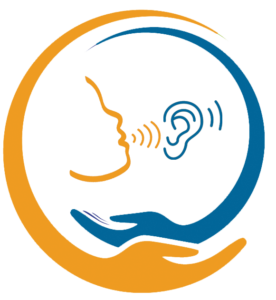Within the field of audiology, where hearing disorders manifest in various forms, Meniere’s Disease presents a distinctive challenge. This condition, marked by vertigo, tinnitus, and hearing loss, often begins subtly, underscoring the critical importance of early diagnosis. Among the essential tools for early detection is the audiogram. Meniere’s Disease, an inner ear condition, poses a formidable challenge to both patients and healthcare professionals.
Early-Stage Audiograms in Meniere’s Disease: Unlocking Key Insights

In this comprehensive article, we will delve into the significance of early-stage audiograms in Meniere’s Disease, exploring their role in diagnosis, prognosis, and the development of tailored treatment plans. Let’s uncover crucial insights into this pivotal aspect of managing Meniere’s Disease.
Understanding Meniere’s Disease
Before delving into the specifics of early-stage audiograms, it is essential to establish a foundational understanding of Meniere’s Disease. This chronic inner ear disorder is characterized by a quartet of symptoms: vertigo, fluctuating hearing loss, tinnitus (ringing in the ear), and a sensation of fullness in the affected ear. While its exact cause remains elusive, it is believed that fluid accumulation in the inner ear plays a significant role.
Early-Stage Audiograms in Meniere’s Disease serve as the initial diagnostic tool, providing vital information about a patient’s hearing abilities, which can fluctuate significantly during the course of the disease. These early audiograms offer critical data for assessing the progression of Meniere’s Disease and planning appropriate interventions.
The Significance of Early Detection
Early detection of Meniere’s Disease can have a transformative impact on its management. Timely intervention can help alleviate the severity of symptoms and enhance the quality of life for patients. This is where audiograms play a pivotal role, serving as invaluable tools in the diagnostic process.
Audiograms: Unveiling the Basics
To comprehend Early-Stage Audiograms in Meniere’s Disease, it is essential to grasp the fundamentals of audiograms themselves. These specialized hearing tests, designed to assess one’s hearing ability across various frequencies (ranging from 250 Hz to 8,000 Hz), provide a visual representation of hearing thresholds. By closely analyzing audiogram results, audiologists can identify hearing deficits and potential abnormalities within the auditory system.
The Role of Early-Stage Audiograms
Early-stage audiograms are the cornerstone of Meniere’s Disease diagnosis. They enable audiologists to assess hearing thresholds and recognize patterns characteristic of this condition. When scrutinizing Early-Stage Audiograms in Meniere’s Disease, audiologists pay particular attention to several key factors:
- Tonal Audiometry: Early-stage audiograms often reveal low-frequency sensorineural hearing loss in Meniere’s Disease. This pattern typically commences in the lower frequency ranges and gradually advances.
- Speech Audiometry: Due to the fluctuating nature of hearing loss, Meniere’s Disease can lead to reduced speech discrimination scores. Early detection through audiograms allows for timely interventions to address these speech recognition challenges.
- Air-Bone Gap: Meniere’s Disease can manifest as significant air-bone gaps on audiograms, indicating a conductive component. Understanding this aspect is crucial for devising effective treatment strategies.
- Tympanometry: This test assesses middle ear function and can aid in distinguishing Meniere’s Disease from other conditions with similar symptoms.
Audiograms in Meniere’s Disease: Key Insights
Now, let’s shift our focus to the specific role of audiograms in Meniere’s Disease. Here are some key insights into how this diagnostic tool can facilitate early detection and monitoring of the condition:
- Hearing Fluctuations: Audiograms excel in detecting the hallmark of Meniere’s Disease – fluctuating hearing loss. By analyzing repeated audiograms over time, audiologists can identify these fluctuations and assess their significance.
- Frequency-Specific Findings: Audiograms provide data specific to different frequencies, enabling precise identification of affected frequency ranges. This information is pivotal for tailoring treatment strategies.
- Distinguishing from Other Conditions: Audiograms play a vital role in distinguishing Meniere’s Disease from other ear-related conditions that share similar symptoms, such as presbycusis or noise-induced hearing loss.
- Tracking Progression: Regular audiograms are essential for monitoring the progression of Meniere’s Disease. By tracking changes in hearing thresholds over time, healthcare professionals can make informed decisions about treatment.
- Treatment Evaluation: Audiograms serve as a yardstick for evaluating the effectiveness of treatment approaches, enabling audiologists to assess the impact of interventions like medication, dietary adjustments, or vestibular rehabilitation.
Conducting Audiometry Tests
Let’s take a closer look at how audiometry tests, including audiograms, are conducted in the context of Meniere’s Disease:
- Baseline Audiogram: When a patient presents with symptoms suggestive of Meniere’s Disease, the diagnostic journey often begins with a baseline audiogram. This initial assessment establishes a reference point for future comparisons.
- Serial Audiograms: To detect the characteristic fluctuations and changes in hearing thresholds associated with Meniere’s Disease, serial audiograms are performed at regular intervals. These repeated tests are invaluable for tracking the disease’s progression, especially in its early stages.
- Tympanometry: In addition to pure-tone audiometry, tympanometry may be conducted to assess middle ear function. It aids in ruling out middle ear pathologies that may mimic Meniere’s symptoms.
- Speech Audiometry: Complementing pure-tone audiometry, speech audiometry evaluates a patient’s ability to comprehend and repeat words at various volumes. It provides insights into overall communication abilities, particularly when considering Early-Stage Audiograms in Meniere’s Disease.
Interpreting Audiogram Results
Interpreting audiogram results in the context of Meniere’s Disease requires a keen understanding of the condition’s characteristic patterns
- Low-Frequency Hearing Loss: Meniere’s Disease frequently presents with low-frequency hearing loss, particularly in its early stages. This unique feature can serve as a valuable diagnostic indicator.
- Fluctuations: As mentioned earlier, the hallmark of Meniere’s is fluctuating hearing loss. Audiograms may reveal dramatic fluctuations in hearing thresholds, often accompanied by periods of remission.
- Progressive Hearing Loss: In some cases, Meniere’s Disease leads to progressive hearing loss, affecting higher frequencies as the condition advances. Audiograms are instrumental in monitoring this progression.
- Asymmetry: Audiograms are crucial for identifying asymmetry between the affected and unaffected ears. This information aids in diagnosis and treatment planning.
Early Detection: The Audiogram Advantage
Early detection of Meniere’s Disease is a critical advantage offered by Early-Stage Audiograms in Meniere’s Disease. Here’s why these specialized tests provide a significant edge
- Prompt Diagnosis: By identifying subtle changes in hearing thresholds, audiograms facilitate early diagnosis, enabling timely intervention.
- Individualized Treatment: Armed with audiogram data, healthcare professionals can craft treatment plans tailored to address each patient’s unique hearing profile and symptom severity.
- Quality of Life: Early detection and intervention can significantly enhance the quality of life for individuals with Meniere’s Disease, minimizing the impact of symptoms on daily activities and emotional well-being.
Audiograms and Treatment Monitoring
The journey with Meniere’s Disease often involves ongoing treatment and management. Audiograms continue to play a crucial role in this phase
- Treatment Efficacy: Periodic audiograms help evaluate the effectiveness of prescribed treatments. Stable or improved hearing thresholds indicate positive treatment outcomes.
- Treatment Adjustments: If audiograms reveal deteriorating hearing, healthcare providers can make necessary adjustments to treatment plans, ensuring optimal outcomes.
- Long-Term Care: Given that Meniere’s Disease is a chronic condition, patients may require long-term care. Audiograms are indispensable tools for monitoring and adapting treatment strategies over time, particularly when focusing on Early-Stage Audiograms in Meniere’s Disease.
The Future of Audiograms in Meniere’s Disease
As we advance in the field of audiology and Meniere’s Disease management, the role of Audiograms in Meniere’s Disease remains pivotal. Exciting developments on the horizon include
- Advanced Testing Technologies: Ongoing advancements in audiology technology are enhancing the precision and informativeness of audiograms. This includes the integration of otoacoustic emissions (OAEs) and evoked potentials to complement traditional audiometry.
- Tele-audiology: Tele-audiology services are becoming more accessible, enabling patients to undergo audiometry remotely. This can enhance early-stage testing accessibility, especially for individuals with mobility challenges.
- Big Data and Predictive Analytics: Researchers are exploring the use of big data and predictive analytics to identify patterns in audiogram data, potentially leading to more accurate and personalized treatment recommendations.
- Patient Empowerment: Audiologists are increasingly emphasizing patient education and empowerment. Patients are encouraged to actively participate in their care, understanding their audiogram results and treatment options.
The Patient’s Role in Early Detection
It is crucial to emphasize that patients themselves play a pivotal role in early detection. Encouraging individuals to seek medical attention upon noticing any hearing changes or experiencing symptoms like vertigo, tinnitus, or ear fullness is of paramount importance. Timely audiometric assessments can make a substantial difference in the early diagnosis and management of Meniere’s Disease.
In the intricate landscape of Meniere’s Disease, early-stage audiograms emerge as potent allies. These diagnostic tools offer valuable insights, enabling early detection, personalized treatment, and improved quality of life for individuals grappling with the condition. Audiograms in Meniere’s Disease are indispensable instruments in the hands of audiologists and healthcare providers, aiding in early diagnosis, disease progression tracking, and treatment tailoring. Recognizing the significance of these audiometric assessments and advocating for their regular use can enhance the lives of those affected by Meniere’s Disease. Early detection holds the key to better outcomes, with the audiogram as our steadfast companion in this quest.
The analysis of early-stage audiograms has unveiled vital insights into the intricate nature of Meniere’s Disease, aiding in its early detection and treatment. The significance of addressing hearing impairment in this condition cannot be overstated. For individuals grappling with these challenges, Aural Care, Kolkata’s Leading Hearing Aid Clinic, stands as a beacon of hope and expertise, offering a comprehensive range of hearing aid solutions. Our dedicated team is well-equipped to provide personalized support, ensuring that individuals with Meniere’s Disease can regain their auditory clarity and improve their overall quality of life.
Remember, if you or someone you know experiences symptoms of Meniere’s Disease, including hearing fluctuations, vertigo, or tinnitus, do not hesitate to seek evaluation and audiometric assessment. Early intervention can make a substantial difference in managing this challenging condition.

Don’t let Meniere’s Disease compromise your hearing – turn to Aural Care for the specialized care and assistance you deserve.
Empower Your Ears Today!
FAQs
I. Can Meniere’s Disease be cured?
A – Unfortunately, there is no cure for Meniere’s Disease, but its symptoms can be managed with various treatments.
II. Are audiograms painful?
A – No, audiograms are painless tests that involve listening to sounds through headphones.
III. How often should I get an audiogram if I have Meniere’s Disease?
A – The frequency of audiograms may vary from person to person, but regular monitoring is essential to track changes in hearing.
IV. Can Meniere’s Disease affect both ears?
A – Yes, Meniere’s Disease can affect one or both ears, although it often starts in one ear and may eventually involve both.
V. Are there any lifestyle changes that can help with Meniere’s Disease?
A – Yes, certain lifestyle changes, such as reducing salt intake and managing stress, can help alleviate symptoms of Meniere’s Disease
About Aural Care

Aural Care is the Best Hearing Aid Clinic in Kolkata offering high quality facilities with lots of experienced doctors. We have 15 years experience in this field. Here, we offer the most comprehensive diagnostic facilities and the latest and best technology in hearing aids.
- Address: GB7, 822, Rajdanga Main Road . Opp. GST Bhawan. Kol 700107
- Phone: +91 98315 37979
- Mail: info@auralcarekolkata.in
- Facebook: www.facebook.com/AuralCareCenterKolkata
- Instagram: www.instagram.com/auralcarecenter

